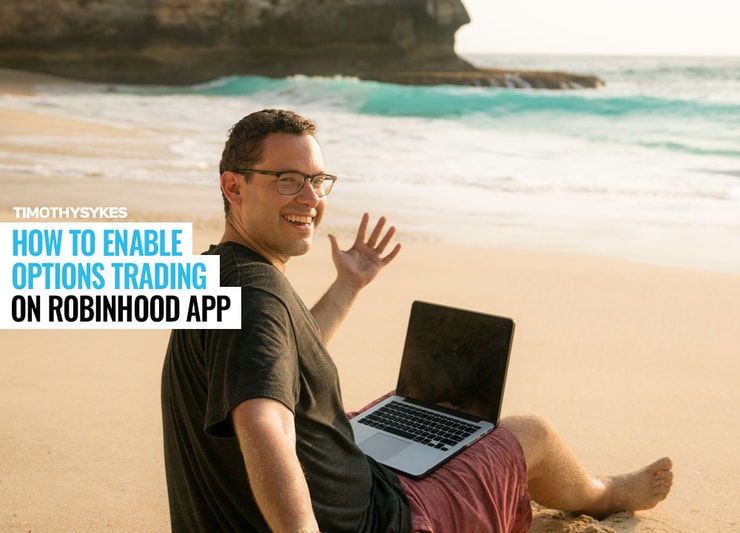Before you can start trading options on Robinhood in 2025, you’ll need to enable options trading manually in your account settings. This extra step helps Robinhood assess your experience level, financial background, and risk tolerance — and it’s standard practice for brokers offering leveraged products.
If you’re wondering how to get approved for options trading on Robinhood or why your request was denied, this guide walks you through every step.
New to options trading? Learn more about the basics of options trading first.
Table of Contents
How to Enable Options Trading on Robinhood in 2025: Step-by-Step Guide

2025 Millionaire Media, LLCOptions trading isn’t turned on automatically when you create a Robinhood account. To access the options trading feature, you’ll need to go through a quick application process and meet the platform’s options trading eligibility requirements.
Here’s how to enable options trading on Robinhood — step by step:
Step 1: Open Your Robinhood App or Log In on Desktop
Navigate to the Account section from the home screen.
Step 2: Tap the Settings Menu
Find the Settings option in your Account menu.
More Breaking News
- ATRO Stocks Fly High: Ready for Takeoff?
- Is It Too Late to Invest in INKT?
- American Airlines Stock Drop: Immediate Reactions
Step 3: Select “Options Trading” or “Investing”
Look for an Investing tab and click on Get Options Trading. If it’s not available, you may already be approved or may need to meet eligibility first.
Step 4: Complete the Options Trading Questionnaire
Robinhood will ask a series of questions about your trading experience, income, net worth, and investment goals. Answer honestly.
Step 5: Submit and Wait for Review
Once submitted, Robinhood will review your profile and determine whether you qualify for Level 2 or Level 3 options trading.
Read this guide to options trading on Robinhood once you’re approved.
Why Robinhood Won’t Approve You for Options Trading (And How to Fix It)

2025 Millionaire Media, LLCThere are several reasons why you might not be able to enable options trading on Robinhood:
- Lack of trading experience
- Insufficient account balance
- Low-risk tolerance or mismatched investment goals
- Incomplete or inaccurate application answers
Robinhood uses these factors to determine whether you’re ready for basic or advanced options trading strategies. If you’re rejected, don’t panic — you can update your financial profile and reapply.
Need to redo your options trading questionnaire? Learn how options trading works before trying again.
Robinhood Options Approval Levels Explained (2025)
Robinhood currently uses a tiered approval system for options trading. Each level unlocks different trading strategies:
| Approval Level | Access |
|---|---|
| Level 2 | Basic strategies like long calls, long puts, and covered calls/puts. Most traders start here. |
| Level 3 | Complex spreads, including credit/debit spreads, iron condors, and iron butterflies. Approval requires more experience and a higher account balance. |
If you’re just starting out, aim for Level 2, focus on risk management, and work your way up. Trying to trade complex spreads without a foundation is a recipe for disaster — I’ve seen too many traders wipe out by overreaching.
How to Close Positions on Robinhood

2025 Millionaire Media, LLCOnce you’re actively trading options, it’s crucial to monitor your positions and track performance. If you run into any issues, don’t hesitate to contact customer support for assistance.
Closing a position means you’re selling an options contract to the market. Here’s how you do it on the Robinhood brokerage platform:
- Use the Search menu to find the stock you want to close the position on.
- Click on the stock to check its details.
- Tap the Trade menu on the stock details page.
- Choose Trade Option, then the Call Option button to sell your contracts.
Want to learn more about options? Sign up for my former student Mark Croock’s Evolved Trader program!




Leave a reply